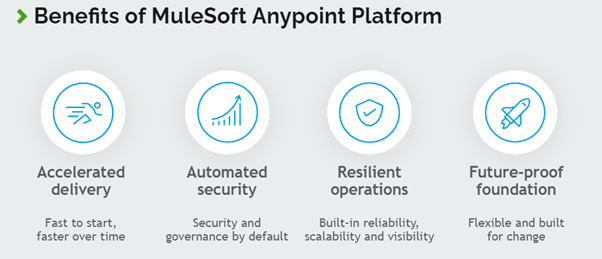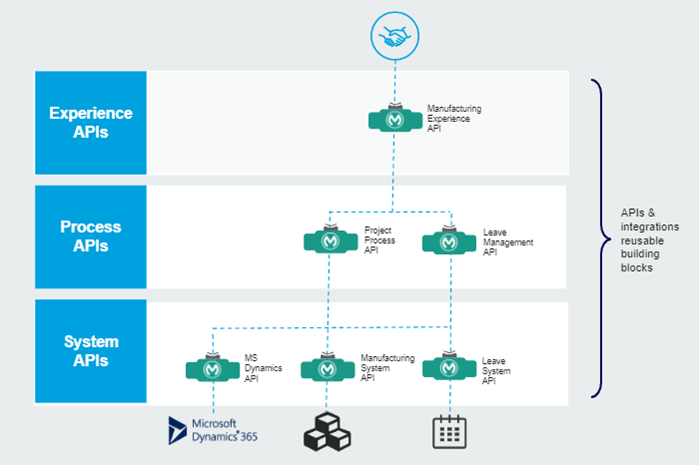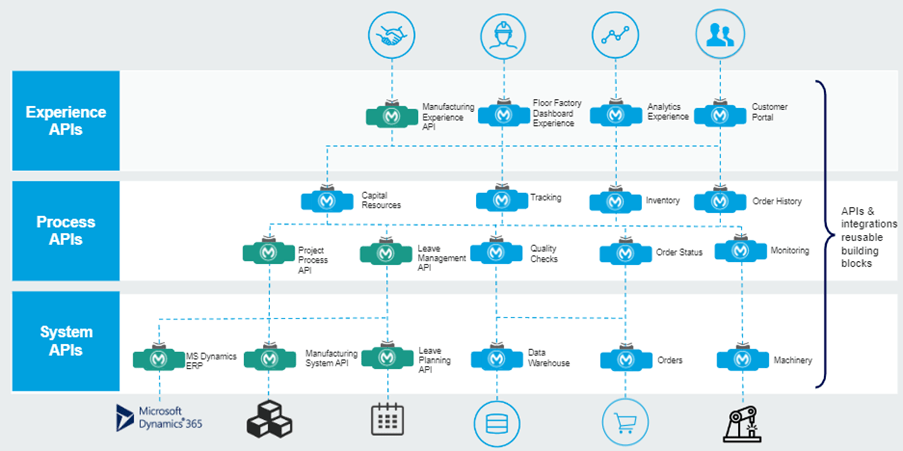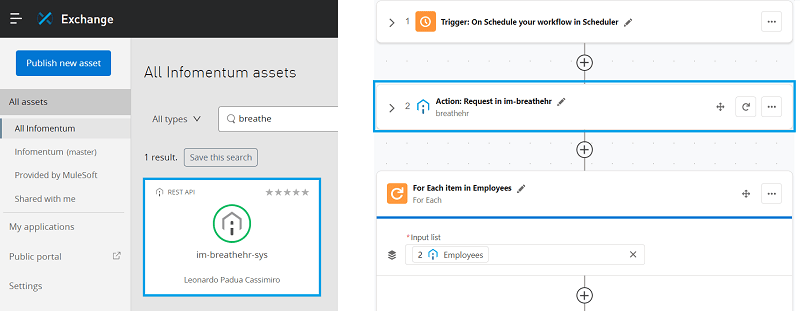Navigating the world of manufacturing can be a complex and exciting experience. Whilst this could be said for most companies and industries, this proved more so the case when Infomentum recently delivered a proof of concept. This organisation not only finds itself at the heart of UK-based manufacturing but also at a junction between academia and government research. A solution was required to bridge the gap from both a technological and operational perspective.
The team was tasked with showcasing what MuleSoft's integration platform was capable of through the following objectives:
- Showcase what value can be created through the technology:
- can costs be reduced;
- can vital time be saved;
- can nonvalue-adding activities be removed?
- Teach stakeholders about the MuleSoft technology:
- the development life cycle;
- the skills and processes required to build a Centre for Enablement;
- the security and performance of the platform;
- how MuleSoft accelerates delivery;
- MuleSoft accelerators and connectors;
- API monetization.
- Identify and implement difficult but impactful integrations to showcase the system capabilities of MuleSoft.

The process followed was simple:
- Analyse organisational processes and technology and select pilot use cases.
- Design and develop API-based integration architecture.
- Showcase the value created.
Step 1: Analyse organisational processes and technology and select pilot use cases.
The team identified which systems were at play within the organisation and how they serviced key operational processes. Selected tools included a bespoke manufacturing ERP system, Microsoft Dynamics 365, and a cloud-based human resources solution. These systems were chosen not only because they were different from one another and thus could help prove the capability of MuleSoft as a technology. More importantly, they were fundamental in the organisation's operational processes and its long-term strategy.
The selected three systems were used for different purposes, including leave request/leave management, inventory and manufacturing process management, project staffing and project/opportunity management and the financial monitoring of projects.
During the analysis, the team quickly observed several common issues:
- Related systems didn't communicate with each other.
- Data duplication and desynchronisation across multiple systems.
- Duplicated processes.
- People needed to complete nonvalue-adding tasks because of the duplication.
- User journeys were suboptimal due to the manual intervention and repetitive tasks.
Step 2: Design and develop integration architecture.
Once the team had confirmed use cases to be automated, a build cycle began. The team implemented the API-led architecture following the MuleSoft way of working.
This API-based architecture comprised of:
- Three System APIs to connect to the three selected systems.
- One off-the-shelf connector, making use of the MuleSoft Connector Marketplace.
- Two Process APIs to transform and map data.
- Finally, one Experience API to ensure data was processed and published appropriately.
This is a view of the created API-led architecture:

Above enabling the integrations between these systems, this API-led architecture forms the foundation for reusable future development. The below API-led view demonstrates a possible future end state and additional APIs to further service the organisation's needs.

Step 3: Showcase the value created.
The purpose of this POC was to demonstrate the ease with which any organisation can unlock value through smart reusable integration. Conservative estimates showed that a 91-day saving was generated through an investment of 8 days of development.
Integrating only three systems helped eliminate four duplicate business processes! Moreover, these enhancements have resulted in improved data accuracy, a better user experience and improved accuracy of load and capacity models within the organisation.
One system proved to be a particular challenge to access and extract/transform data from. Using MuleSoft to interface with this system, future teams will now easily and securely be able to access this data without the need for costly, complex and repetitive integrations. Simply put, the system's data was unlocked for the organisation. MuleSoft integrates into all manner of systems, ranging from bespoke legacy systems to modern off-the-shelf solutions.
The most exciting aspect of this POC was that this was only the start of the journey, only a portion of the organisation was analysed, and a small subset of use cases implemented. The reusable APIs will form the foundation for future delivery, and as additional use cases are implemented, the rate of innovation and change will only increase.
If you are interested in seeing what MuleSoft can do for your organisation, why not request your own POC from Infomentum?







